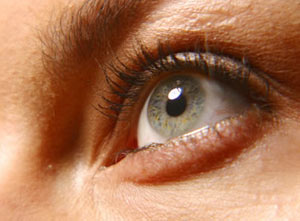Are you right or left eye?
Special studies have been conducted and concluded that 2/3 are right-eyed and the rest belong to left-handed people. A human usually has two arms, two legs, two eyes, two hemispheres. But that is only the first view that humanity is a balanced creature.
First of all, we have a right hand - the majority are right-handed. Then we also have a ' pros ' eye. And in addition, the two hemispheres of the brain have a disproportionate functional role: the left hemisphere (usually with right-handed people) dealing with logical-abstract thinking and a larger part-processing words; right brain hemispheres help perceive images.
Going back to eye problems, special studies have been conducted and concluded that two-thirds are right-eyed and the rest belong to left-handed people.
One problem is whether these unique differences will affect the process of perceiving information displayed as awareness of the text. And if so, is the perception of the left eye or the right eye? The Institute of Cognitive Neurology at Modern University for the Humanities has conducted many investigations to answer this question.
 The study was conducted on right-handed students, but there were also a few in the right eye - the rest were left.
The study was conducted on right-handed students, but there were also a few in the right eye - the rest were left.
All participants were asked to read a piece of text on the computer screen, which would be changed to the left or right of the computer screen, while the participants' heads is held straight to the center of the screen (in those conditions, the information showing the scope of the left-hand view will be brought to the right hemisphere, and vice versa).
The results show that it turns out that the left-handed people are able to read text faster when the text is changed from the left to the right of the computer screen . For the few right-eyeers left, those changes are unclear.
A more detailed analysis has shown that when left-handed people read text on the left, the brain perceives more symbols in the case of reading the text on the right-hand side.
In other words, on the left half of the view, a fixed look (fix fixation) is featured due to the higher 'information capabilities' . This is directly related to the speed of reading text: When a view is more aware of many symbols, it means that the person can read faster.
Another sign of success when reading it is: while receiving the text, the eyes often occasionally glance back at the text just read (obviously because of difficult perception). Therefore, in the text on the left, left-eyed people rarely glance back than when they read the text on the right.
This shows that the ability to perceive the text on the left is higher. Besides, the majority of people with left-handed eyes often have faster eye movements (the English term is Saccades) to the left compared to the right.
When all of the study participants were right-handed, controlling their right hand was done by the left hemisphere. For those who are right-eyed, the same left hemisphere also controls their right eye movements.
For those with left-handed eyes, left eye controlled by the right hemisphere, this hemisphere usually does not affect the process of controlling the movements of the dominant hand. This turned out to give better results. Therefore, those who are left-handed can read the text on the left faster.
This information will help to consider the eye problem when producing image products - such as training programs. And maybe in the future the production of products for people with left eye will be considered.
Bui Thanh
- The mystery of the tendency is 'off the left' that people don't recognize
- Secrets of left-handed people
- Scientific explanation for the right-to-left confusion
- Left-handed and 12 truths
- The advantages of left-handed people that you don't recognize
- Left-handed people have more disadvantages in their work
- Disadvantage of left-handed people
- Why is there water running on the right, with water on the left?
- The fun of left-handed people
- Left-handed and longevity
- Why do you and many other countries in the world drive left?
- For beautiful photos, take a tilting shot on the left side of your face
 Green tea cleans teeth better than mouthwash?
Green tea cleans teeth better than mouthwash? Death kiss: This is why you should not let anyone kiss your baby's lips
Death kiss: This is why you should not let anyone kiss your baby's lips What is salmonellosis?
What is salmonellosis? Caution should be exercised when using aloe vera through eating and drinking
Caution should be exercised when using aloe vera through eating and drinking